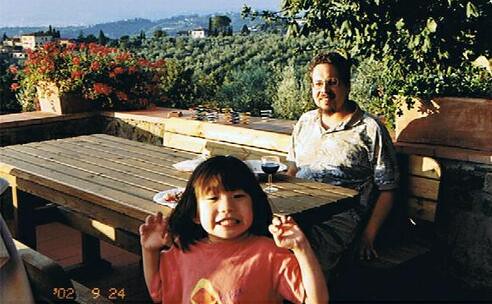🦋 Hilit
In college, I used to underline sentences that struck me, that made me look up from the page. ... I noted them for their clarity, their rhythm, their beauty and their enchantment. For surely it is a magical thing for a handful of words, artfully arranged, to stop time.
In the NY Times Sunday Review*, novelist Jhumpa Lahiri reflects on the "urge to convert experience into a group of words that are in a grammatical relation to one another" -- I empathize with her as far as this being a primary motivation. I love her description of reading Italian, which captures perfectly how I enjoy reading Spanish.
I sometimes underline sentences too, though I don't remember having done so in college -- it's a habit come by recently, until only a few years ago I could not hilight a book without its feeling forced and unproductive. Just last night I started a reread of The Art of Resurrection, which happily contains lots of underlining and margin notes from 2010. I believe a part of blogging my reread is going to be quoting from these, seeing if I am still finding these artfully arranged bunches of words to hold the same beauty and enchantment, how my reactions have evolved over the time since I first read it -- which time of course includes my translation of and revising of the first chapter , and reading Santa Maria de las flores negras... I'm thinking I'll try to keep fairly good bloggy notes about this reread. (As for Chapter 1 though, I am going to let my translation stand without discussing it.)
The second chapter (which I call "In Transit" in my notes) is slightly tedious compared to the opening (although, well, what would not be) -- there is a shift of tense from the imperfect narrative to a remembered preterite, the camera zooms out for a little setting up of the plot of the book. Here Magalena Mercado is introduced (again not in person, but via a story told by a traveling salesman) and we get some of Zárate Vega's back story. My only hilight in this chapter is the last line -- ¡Aleluya, Padre Santo! -- where I note a transition into Zárate Vega's voice. Switches between tenses and between voices are a very, very important part of this novel I think -- based on the two books I've read of Rivera Letelier's it seems to me like these switches are almost the key feature of his prose style. In this regard, the Christ of Elqui makes an ideal character for Rivera Letelier to draw.
 * and/or in the online "opinionator" section of the Times website? I am no longer sure with this newspaper what is the print organ and what is the digital presence. This piece is certainly printed on the front page of the "Review" section of the hardcopy Times delivered to my stoop this morning. However its url identifies it as part of the site's blog section -- perhaps there is no longer any distinction to be made between these venues.
posted afternoon of Sunday, March 18th, 2012
➳ More posts about Rereading
➳ More posts about Readings
➳ More posts about The Art of Resurrection
➳ More posts about Hernán Rivera Letelier
➳ More posts about Language
|

